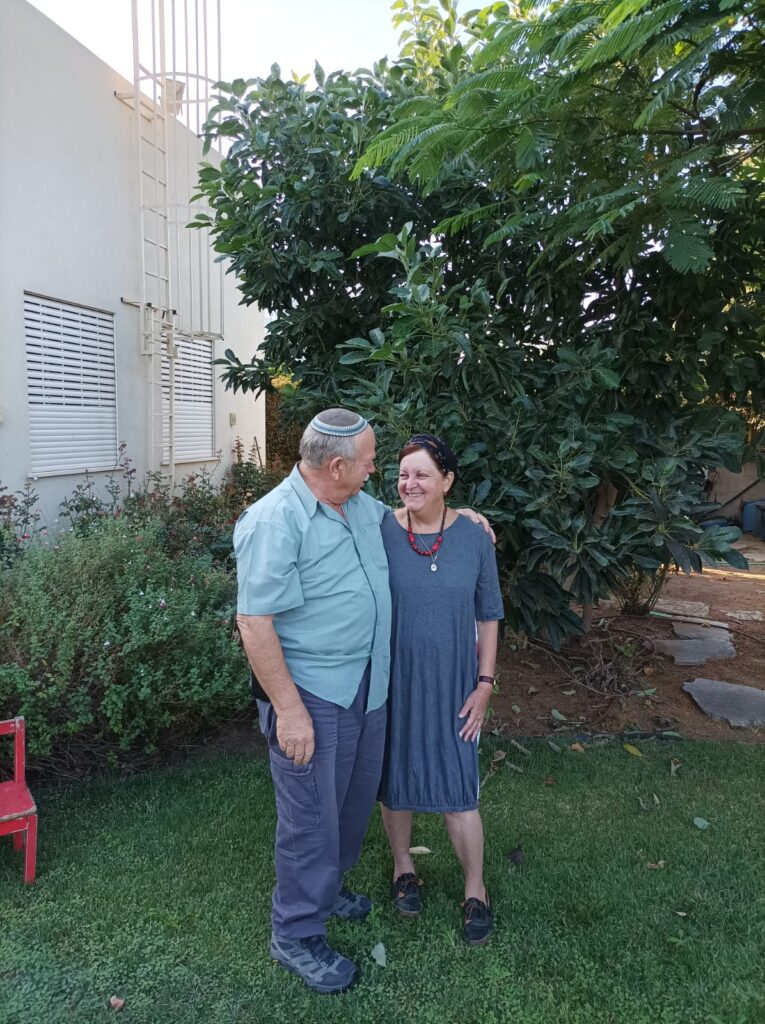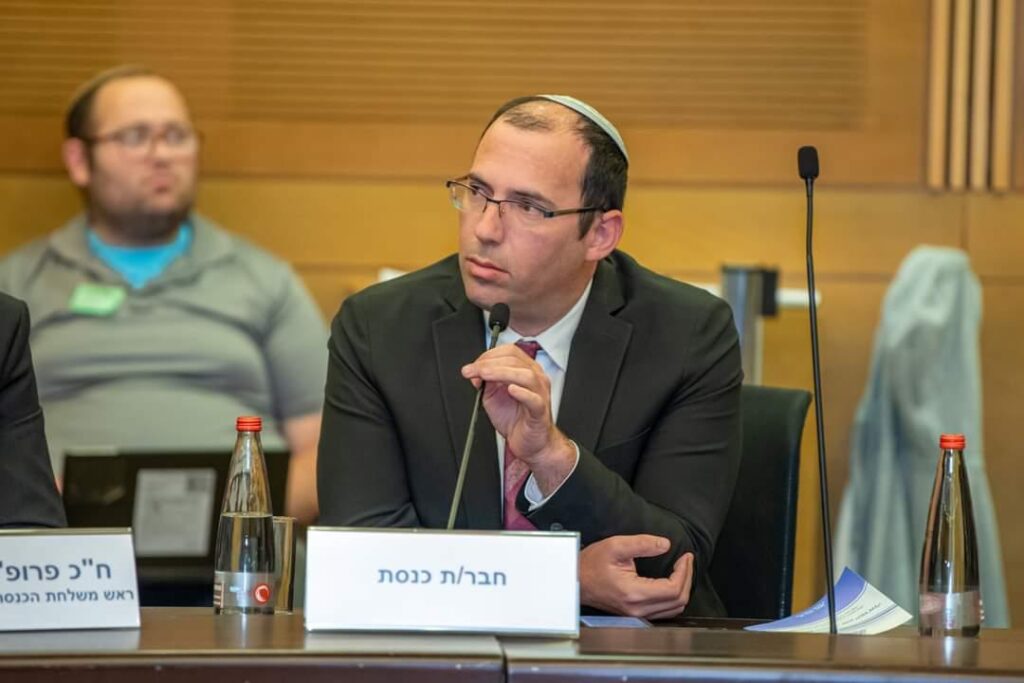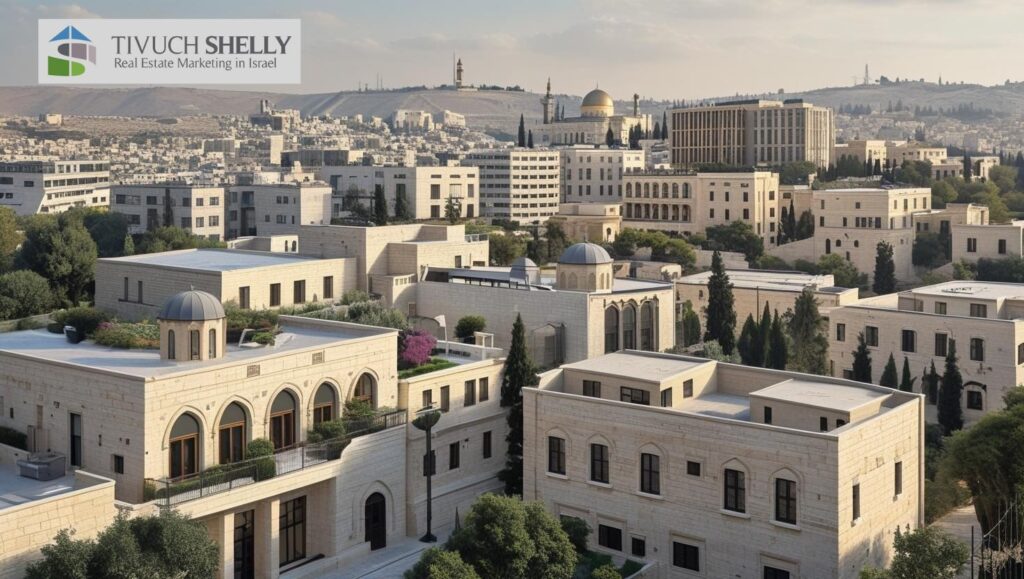Visiting The Temple Mount (Har HaBayit)
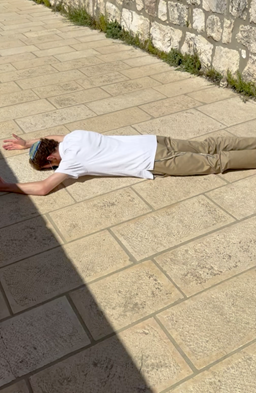
Yonatan on Har Habayit
Credit: Photo Dr. Alex Sternberg
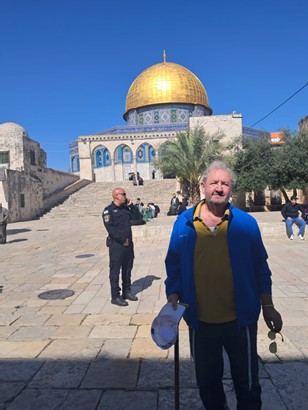
The author this Pesach on Har Habayit
By Dr. Alex Sternberg
“About half a million people visited the Western Wall over Passover this year; but only 6,315 went up to the Temple Mount.” reported Kikar HaShabbat, an Orthodox news site. My son Yonatan and I were among those who did both.
Although going up to Har HaBayit is becoming increasingly popular, some remain hesitant. This site, where both Holy Temples once stood, serves as both a religious and a national heritage location. It defines the Jewish nation and our claim to the Land of Israel. For this very reason, Arabs attempt to prevent Jews from exercising ownership and deny our right to pray there. Unfortunately, the Israeli government continues to adhere to a misguided policy enacted shortly after the Six Day War, ceding control of the Temple Mount to the Arabs. Having wanted to make this trip for some time, I was disappointed that the Israeli government was preventing it. However, times are changing. Yonatan, who lives in Israel, has visited several times, and we decided that during my trip for Pesach, he would accompany me.
I was excited. After visiting the mikveh of the Gur Hassidim, Yonatan and I made our way to the Kotel, joining about 25 other pilgrims at the Mugrabbi Gate. This is still the only permitted entrance for non-Muslims to the Har HaBayit. We were greeted on the wooden ramp by a unit of Israeli Temple Mount police who would guide us on our journey.
We walked onto the Mount and were instructed by the police to walk quickly and not linger at any one spot. The Har HaBayit opened up before us, revealing a vast expanse filled with many fallen rocks. The rocks resembled those we see by the Western Wall ruins. Could they date back to the destruction of the Second Temple? I wondered. And suddenly, the majestic Dome of the Rock was in front of us. Seeing the shrine built over the ruins of the ancient Jewish Temple saddened me.
As it was early afternoon, our group stopped at a place opposite the Dome of the Rock and lined up to daven Minchah. Not knowing what to expect, I was surprised to see the minyan formed. “I thought we are not allowed to pray up here,” I thought, as I answered a loud Amen during the Kaddish. Some prostrated themselves on the stone floor with outstretched arms in commemoration of the Temple worship during the time of the Beit HaMikdash.
It’s interesting to see how much has changed since the days when the Waqf employed Arab women to accompany Jewish visitors, ensuring they wouldn’t pray or even move their lips. These women were even instructed to spit on visitors, making their experience more uncomfortable. Thankfully, those days are behind us, along with the spitting. Now, the Israeli Temple Mount police are there to accompany these groups, gently encouraging everyone to complete their visit in a timely manner. While they might wait impatiently during the tefillah, they respect the process and do not interfere.
Ascending to the Har HaBayit is controversial but entirely safe. Actually, it was a pleasant and exciting adventure.
The controversy stems more from rabbinical disagreement about the exact location of the Holy of Holies than from the vehement opposition of the Arabs.
When the Beit HaMikdash stood, the Holy of Holies was so sacred that even the high priest was allowed entry only once a year: on Yom Kippur. Today, although the Temples have been destroyed, the Mount itself still retains a holy status that we must not desecrate. The halachic controversy arises from the uncertainty regarding the precise location of the Holy of Holies and other sacred areas that are off-limits to us.
Immediately after Israel reunified Jerusalem and the Kotel and Har HaBayit were in Israeli hands, Rabbi Goren, the Chief Rabbi of the Army, requested the IDF Corps of Engineers to map out the Temple Mount to determine where we are allowed to go and where it is forbidden. He subsequently published a book with his findings. Rabbi Goren, however, warned that even in the areas where we are permitted to go, one should only go after immersion in a ritual bath (mikveh).
He encouraged Jews to ascend based on this knowledge and the historic precedent of eminent rabbis who had gone up to pray, dating back a thousand years.
Such rabbis included Moses ben Maimon, the revered Rambam, who made a pilgrimage to Jerusalem in 1165. In a letter, he wrote about praying at “the Great and Holy House.”
Even though nowadays the Temple is destroyed because of our sins, nevertheless, even today everyone is required to show it respect [fear] as was practiced in the days when it stood. No one may enter it except the places that one is permitted to enter (Maimonides, H. Beit Ha-Bechira 7.7, italics added)
Rabbi Goren advocated for a return to Har HaBayit not only as a religious obligation but also as a national one.
Unfortunately, his vision encountered a setback. Moshe Dayan, the Defense Minister of Israel, made a bizarre gesture by granting the defeated Jordanians rights over the Temple Mount. Dayan, a non-religious Jew, either did not grasp the significance of the site for Jews or simply didn’t care. Once again, Jews were barred from praying at the location of our ancient Temple, but this time by Jews!
Today, after October 7, we find ourselves in a different situation. The Netanyahu government is increasingly pressured by right-wing forces to assert Jewish and Israeli claims everywhere. Government ministers, such as Itamar Ben-Gvir, frequent the mountaintop with increasing regularity. Yeshivas conduct daily scheduled classes there.
Just a look at the numbers from this past Passover when Yonatan and I went up. While “only” 6,315 worshippers ascended, it significantly increased from the 4,625 of 2022 and the 2,641 of 2021. However, to realize the vision of Rabbi Goren, more needs to be done—more need to come. Out of sight is out of mind, the saying goes. We demonstrate ownership of our sacred Temple Mount by going there frequently to worship.
Israel needs to build a synagogue on the Temple Mount and stop the Arabs from building more mosques. Did you know they have built five mosques there since 1967, something they agreed not to do?
Dayan not only ceded the Har HaBayit to Arab control but also the Cave of the Patriarchs in Hebron. However, a motivated Israeli government arranged for Jews and Arabs to share the site, and today, we have daily Jewish prayer. More worshippers on the Temple Mount will also motivate the government there.
“Next year in Yerushalayim on Har HaBayit.” n
Dr. Alex Sternberg is a Jewish, Zionist activist and author of Recipes from Auschwitz-The Survival Stories of Two Hungarian Jews with Historical Insight Amazon Press and the forthcoming The Toughest Jew in Brooklyn.









